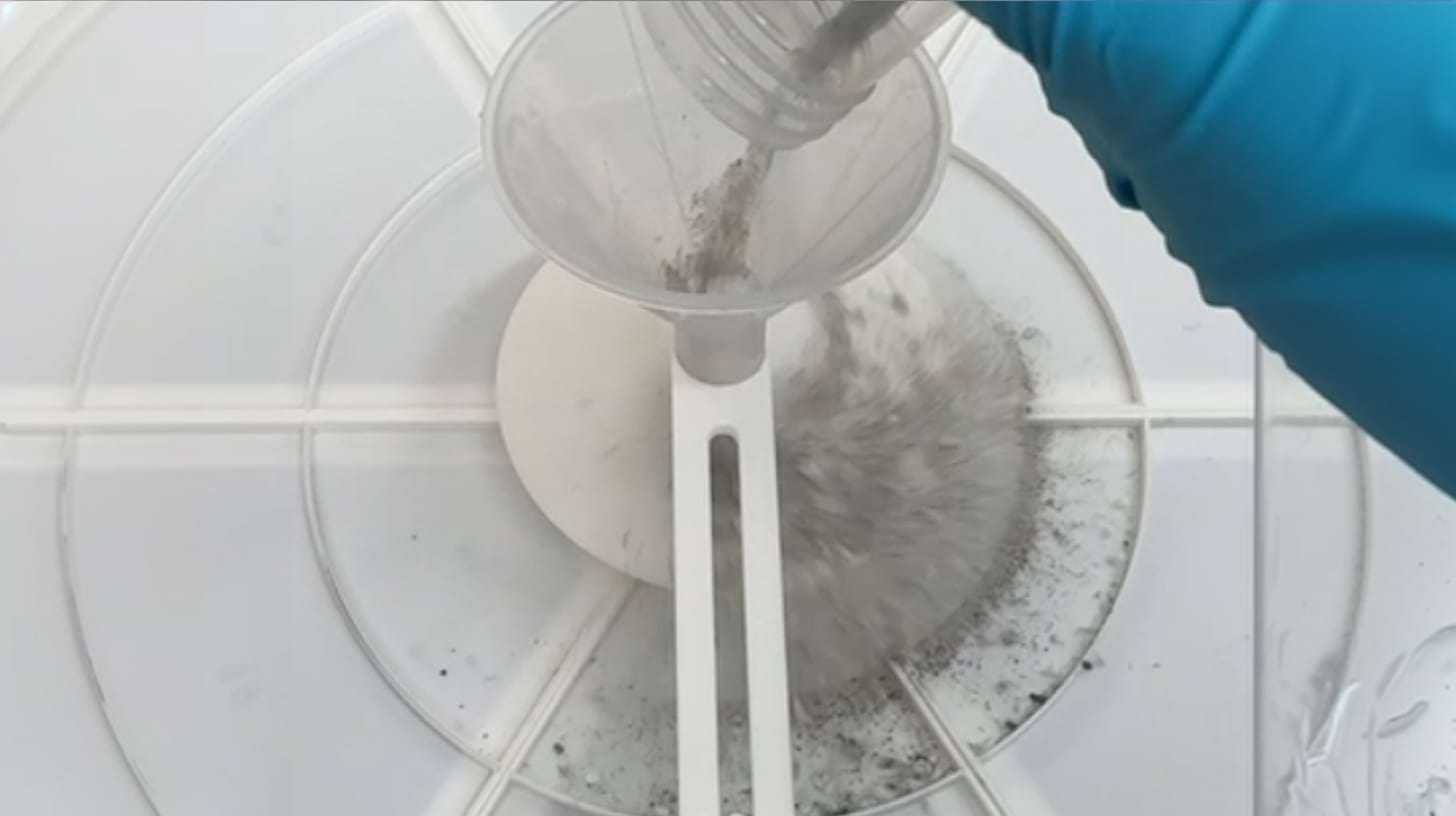
Designing The Future Of Dry Particle Separation
XIAO CHEN ZHANG, KATHRYN HADLER, NAVID AMINNIA, ALVARO ESTUPIÑAN-DONOSO
INTRODUCTION
It might sound unglamorous but separating dusty grains could be one of the most important steps toward building a lasting human presence on the Moon. At the European Space Resources Innovation Centre (ESRIC) hosted by the Luxembourg Institute of Science and Technology (LIST), researchers are using Luxembourg’s MeluXina supercomputer to model and refine a lightweight particle separator. The system is designed to sort lunar regolith, the dusty material that covers the entire lunar surface, by size without relying on any fluids. And while this work is aimed at future space missions, it may also offer a fresh perspective on how we process minerals here on Earth.
A SIMPLE METHOD WITH BIG IMPLICATIONS
This research is part of a broader effort to make use of local materials in space, an approach known as in-situ resource utilisation (ISRU). On the Moon, that usually means working with lunar regolith. Formed over billions of years through space weathering, lunar regolith may harbour valuable resources for human use, but it poses significant difficulties for handling.
One of the first challenges is to separate these particles by size to provide suitable feedstocks for different ISRU applications, such as oxygen production, metal extraction, and construction. On Earth, size separation is often done using water-based methods such as flotation or wet cyclones, which is not an option in space. Thus, at ESRIC, researchers investigate dry, energy-efficient alternatives to handle lunar regolith.
Beyond its long-term value for space exploration, the method has immediate relevance on Earth. By removing the need for water, this technique helps reduce energy use and saves valuable water resources, it can lead to lower costs and fewer environmental risks, especially in regions where water is limited or the process is energy intensive.

ENABLING SIMULATIONS WITH MELUXINA
The separator being developed uses centrifugal force and surface interactions to guide particles as they move across a rotating conical surface. It may seem straightforward, but the behavior of the material is surprisingly complex. Regolith consists of loose and heterogeneous particles ranging from a few micrometers to a few millimeters. These particles interact with each other, and with the cone’s surface, through friction and collisions. Capturing that behavior accurately requires deterministic simulation approaches such as the discrete element method, where each particle is followed individually through space and time.
The goal is not just to simulate particle motion, but to optimise the separator’s design and working conditions efficiently, including both terrestrial and lunar environmental conditions. To do that, researchers are applying advanced optimisation techniques that require running full non-linear simulations repeatedly, each time with slightly different parameters. These might include the cone’s shape, its tilt angle, rotation speed or surface characteristics. Each simulation tracks how thousands or even millions of individual grains move, collide and settle. The materials involved range from tiny particles to larger fragments several millimeters across. Capturing this behavior accurately means solving a vast number of interactions over many time steps, something that simply isn’t practical on a regular computer.
With access to MeluXina, it becomes possible to carry out these high-resolution simulations in parallel, exploring a wide range of scenarios. This makes it possible to identify which combinations lead to better particle separation, guiding the design process with solid data rather than trial and error.
A CLEANER APPROACH WITH DUAL BENEFITS
The early results show that it is possible to separate regolith particles efficiently without fluids or complicated machinery. This kind of solution fits well with the practical needs for developing future lunar systems. At the same time, it speaks to the growing interest in more sustainable ways to process minerals on Earth.
Dry separation that works through motion and material contact could help reduce dependence on water and simplify operations in mining and recycling industries. It offers a practical approach to cut resource consumption and environmental impact without waiting for major infrastructure changes. What begins as a tool for the Moon may also become a cleaner and smarter option for many places here at home.
About the Project
This work is carried out under the FNR PEARL funded program SolSR. The research focuses on the behavior of granular materials under dynamic conditions relevant to space resource operations. It is part of the mission of ESRIC to support autonomous technologies for future space exploration while contributing to sustainable innovation on Earth.


